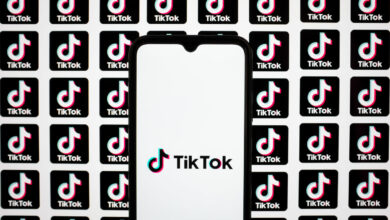How agencies are tackling growing sports media fragmentation

By Antoinette Siu • February 23, 2024 • 4 min read •

Ivy Liu
Sports media investments are rising as the fragmented media landscape is forcing agencies and advertisers to rethink their content strategies.
As WARC noted this month in its sports media report, global ad spending on sports media rights is expected to reach $61 billion this year (up 18.9% on pre-pandemic levels) on major live events in 2024 — even as streamers and social media attract wider audiences across different channels.
“Sports is the main [content] keeping people from cutting the cord completely,” said Darwin Aguinaldo, media director of linear media at Media Culture. That said, cord-cutting has led to some regional sports networks to disappear, though they were once a bastion of relatively inexpensive ad inventory for regional advertisers.
Sports content landscape changes
It has become more important for marketers to consider when and in what format people are watching sports and on what devices and screens, explained Kevin Collins, evp of strategic sports investments at IPG’s Magna. For example, NFL games run on broadcast and cable, OTT platforms and mobile, whereas college football is more fragmented with the conferences. Networks shift various packages across several platforms, Collins said.
The resultant effect on pricing is what’s keeping sports buyers on their toes. “It is fragmented as certain sports and teams are available on different platforms, which causes CPMs in non-linear TV platforms to come in higher compared to linear TV,” said Aguinaldo.
Empower Media is guiding brands through their sports content based on budgets and client base, whether that is strategizing around consumer type, geography or sports fan bases, said Alexander James Marshall, president and chief growth officer of Empower Media. With more fragmentation in sports, it means clients may not be able to invest in everything all the time. Still, depending on their media budgets and taking into consideration some higher prices for events like the Olympics or March Madness — there are different ways to engage fans with sports content.
“If you want a spot in the championship game, you may have to spend on other properties you aren’t as interested in,” Marshall said. “[With clients,] we can bring various options that might include an ad in the big game, or less expensive options that can reach the same audience but in more creative, out of the box ways that can maximize limited budgets – still embracing the sports ecosystem.”
Joanna Ruttner, vp director of strategy and planning at Involved Media, also noted that agencies need to know which sports fans use what platforms — as well as where they get post-game content. For instance, soccer and fight sports could mean buying audiences with a streaming-first approach, whereas NBA would be more focused on linear, streaming and post-game social highlights.
“This better integrates our client’s brands in the conversation … [As] sports rights and distribution change – we adjust our activation partners, and buying strategies to effectively reach our sports fan audience,” Ruttner said.
Involved Media’s sports fan study also found that 46% of sports viewers watch highlights, while 29% watch live via social media.
Expanded offerings in emerging sports
With the complicated sports ecosystem, some agencies rely on a dedicated media sports team focused on understanding the changing rights, emerging platforms and new partnerships. Dentsu has been trying to work with clients on balancing the traditional linear sports and the new streaming partners’ offerings, said Jimmy Spano, evp, and head of Dentsu Media Sports.
The rise in streaming deals has led to fragmentation, but it also has opened more opportunities that “previously hindered many leagues, athletes, and the fans from connecting with one another,” Spano noted. It introduced platforms for more women’s sports and niche sports that were limited in airtime on traditional linear — from sports documentaries to talk shows or series.
Additionally, the expanding sports space could benefit some smaller advertisers, provided they are able to work with agencies on their cross-platform and data strategies, said Dave Leitner, chief media and acquisition officer at finance app MoneyGram. It can allow advertisers with smaller budgets to find additional opportunities to be a part of the sports ecosystem.
“A key benefit of the fragmentation is that there are more options than ever before to leverage sports media to build a brand,” Leitner said. “Agencies and buyers are leveraging advanced data analytics and audience segmentation techniques to identify and target specific audiences across various platforms.”
For example, there are more ways to create cross-platform campaigns to gain diverse audiences in local teams, youth sports and popular sports like pickleball, said Nicole McCormack, svp and gm of sports management platform TeamSnap Brand Solutions.
“Brands seeking to navigate the increasingly fragmented sports media landscape have to recognize that audiences have shifted some attention away from professional men’s leagues,” McCormack said.
https://digiday.com/?p=535415



